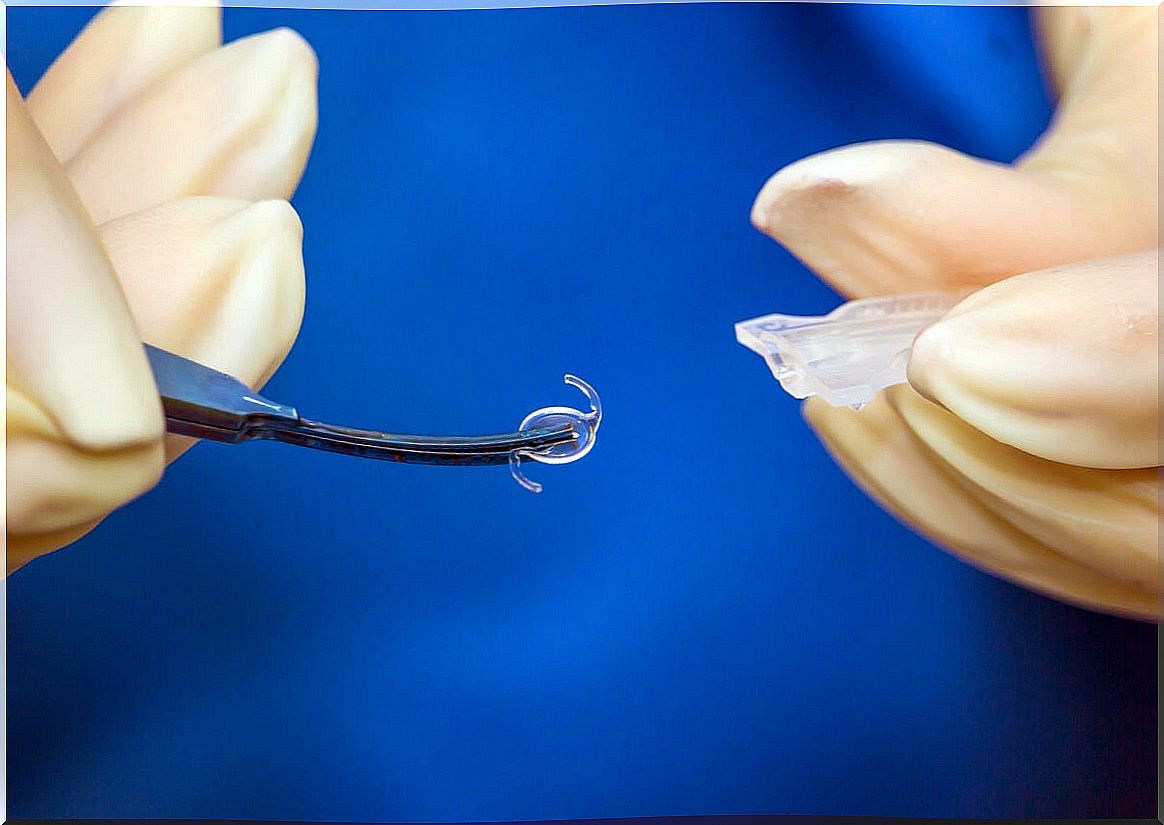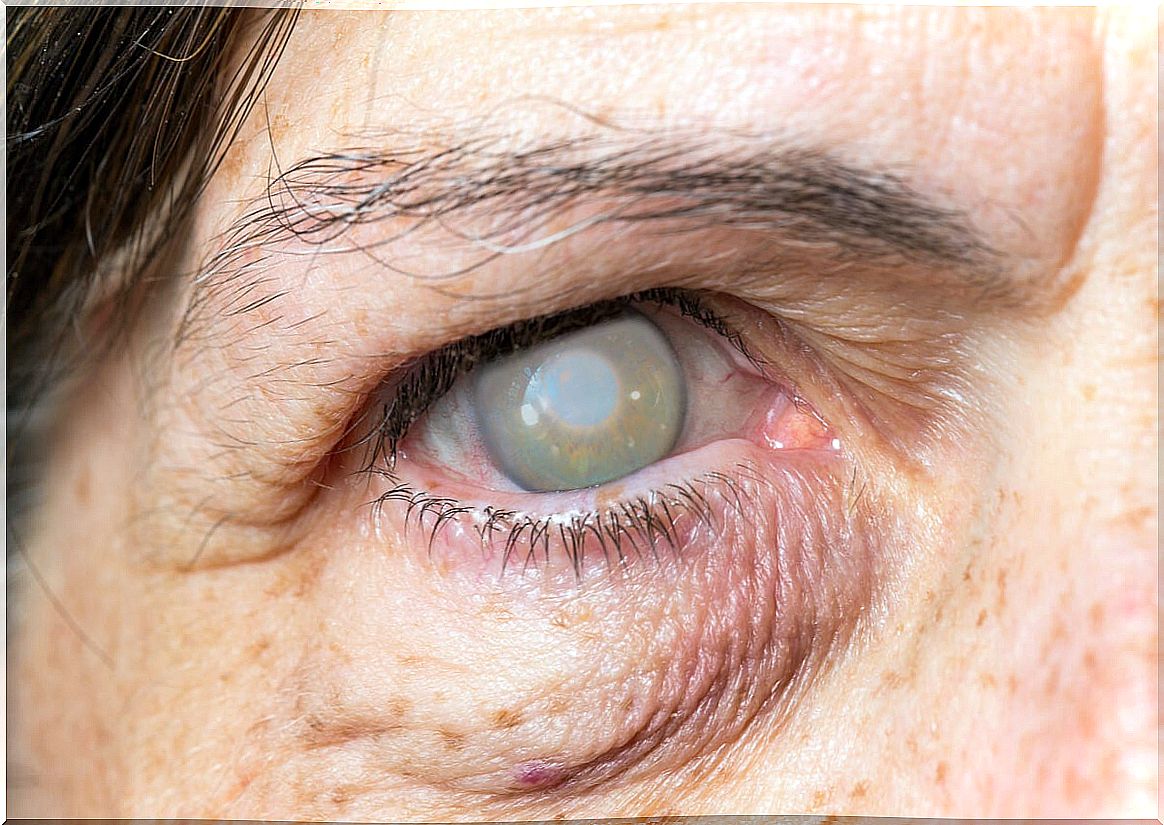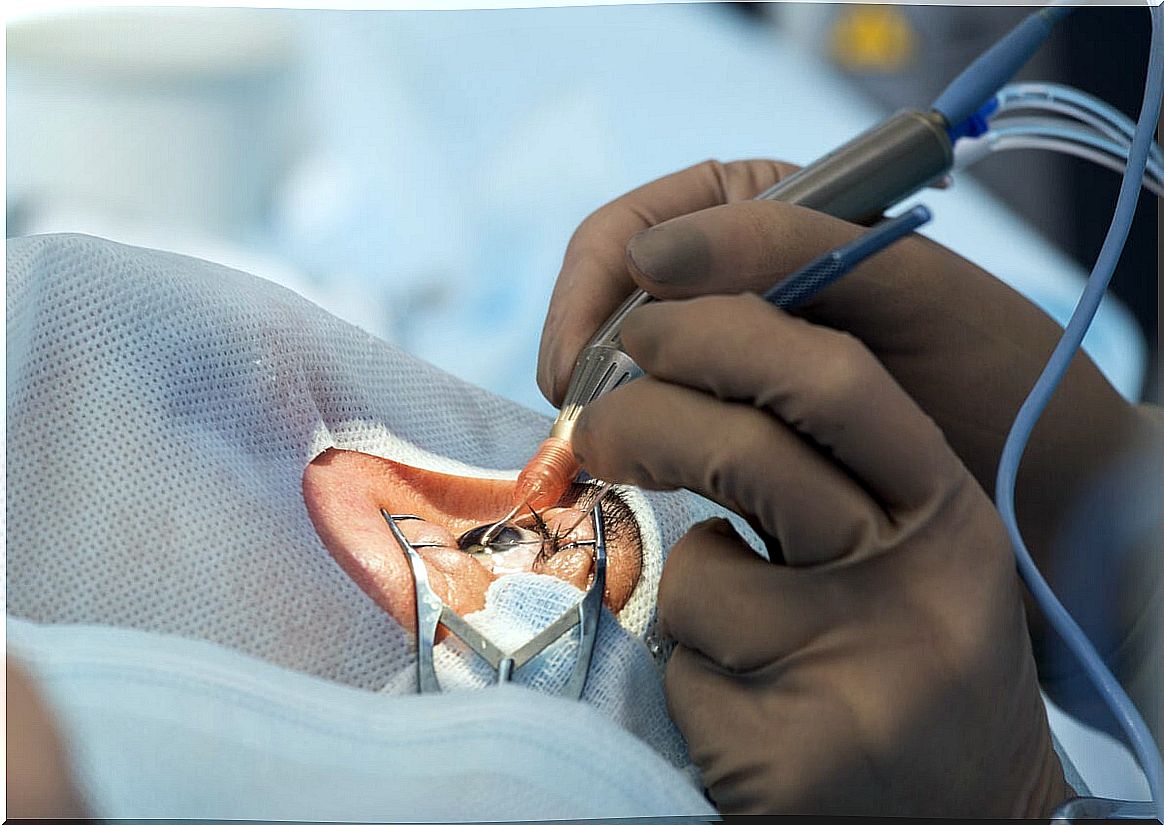Intraocular Lens Surgery: When Is It Necessary?
Most of the causes of decreased visual acuity involve the involvement of one of the refractive media. A good solution for these cases is intraocular lens surgery.

The human eye is an anatomical structure that has different means of refraction, the lens being the most important of all. Many pathologies can affect the ocular structures, so it is necessary to take corrective measures. One of the available treatments is intraocular lens surgery.
The main function of the means of refraction is to make light rays hit a specific point on the retina to achieve maximum visual acuity. When there is a problem with the cornea or the lens, the light will hit the wrong point, which will cause various vision problems in the affected person.
Intraocular lens surgery is the preferred medical treatment to solve refractive problems and cataracts. The procedure consists of the introduction of a transparent natural lens in the eye to correct or replace the entire lens. It is a field in which multiple advances and innovations have been made.
What can change the function of the lens?
The lens is the main structure focused on the redirection of light in the retina. When its function is impaired, people will have noticeable vision problems and other eye symptoms.
Diseases of various kinds can affect this structure, cataracts being one of the most frequent. These can be defined as the presence of an opacity in the lens of very variable magnitude.
It is a pathology associated with age, being more common in older people. Other diseases of the lens that affect its function are the following:
- Presbyopia.
- Capsular opacity.
- Pseudoexfoliative syndrome.
On the other hand, there are disorders that, despite not directly affecting the lens, can alter its function. Among them are myopia, hyperopia and astigmatism. All of these conditions alter the point where light hits the retina, causing blurred vision.

When is it necessary to do intraocular lens surgery?
Intraocular lens surgery is a technique used for many years to correct refractive problems and eliminate dependence on glasses or contact lenses. The use of it was recommended only in severe problems, however, in recent years it has also been used to correct disorders of moderate intensity.
There are two characteristic conditions in which this treatment is used: refractory diseases and cataracts. In this sense, the lens used and the procedure in general may vary depending on the pathology.
Refraction problems
In general terms, the surgery in question is recommended for all those who have notorious refractive problems. In addition, it is also prescribed for use in patients who are not candidates for laser surgery in the superficial or deep layers of the cornea.
The lenses used in patients with refractive problems are phakic intraocular. This specific type is placed in the anterior or posterior chamber of the eye without the need to remove the lens. In this way, the artifact will redirect the light and focus it on the point of greatest visual acuity on the retina.
waterfalls
The presence of opacity in the lens will prevent the passage of light through it, so that a person with cataracts may be blind. According to the National Eye Institute , the use of glasses helps in the initial stages, however, the treatments available in advanced cases are more invasive.
One of the most used in cataract patients is intraocular lens surgery. In this case, doctors will use pseudophakic lenses to correct the problem, which involves removing and replacing the lens. This operation is also useful in patients with presbyopia over 45 years of age.
What is intraocular lens surgery like?
The procedure is very quick and usually takes about 30 minutes if there are no complications. Preparation for surgery begins a week before it, when the ophthalmologist makes small holes with a laser between the anterior chamber of the eye and the lens to avoid increased intraocular pressure.
A course of antibiotics and anti-inflammatories may also be started a few days beforehand to avoid complications. Generally speaking, intraocular lens surgery is performed by the following steps:
- The patient will lie on his back and the professional will apply a local anesthetic to inhibit the sensitive innervation of the eye. Sedatives may be given to calm the person.
- The doctor will then remove the germs located in the eye area and proceed to open the eyelids with a special instrument called an ophthalmic speculum .
- Lubricant should be placed on the cornea to avoid injury. Subsequently, a small incision will be made in the eye and the intraocular lens will be inserted.
- Finally, the specialist will remove the corneal lubricant and proceed to close the incision with very thin stitches.
- After the suture is finished, you will put lubricating oils on the ocular surface and close the eye with a patch.
Benefits of surgery
The greatest benefit expressed by patients is the considerable improvement in visual acuity after placement of the device. In addition, the lenses are so thin that the difference will be imperceptible and will not represent any discomfort.
Other benefits of intraocular lens surgery include the following:
- It is capable of curing severe conditions that traditional lenses cannot improve.
- Dramatically improves night vision.
- Eliminate dependency on glasses or contact lenses.
- They can be removed if necessary.
- Recovery is quick and there is usually no dry eye.

Possible risks and complications
As with all surgical treatments, intraocular lens surgery includes risks. However, their incidence is very low.
On the other hand, one of the most severe complications is the rotation of the lens inside the eye. It is very rare that it happens, fortunately. Among other complications, the following stand out:
- Corneal edema
- Post-surgical infections.
- Glaucoma and loss of visual acuity.
- Retinal detachment.
Another complication of the surgery is the formation of posterior cataracts. However, its incidence is also low and is not associated with age. Studies found it only in 46 patients out of a total of 1653 cases studied.
Intraocular lens surgery: a low-risk solution
The surgical procedure in question is the treatment of choice in some cases of severe cataracts and refractive problems. It is a fast, minimally invasive technique with very few risks and complications. The restrictions that patients have are also few and it can be practiced in older adults.
One of the limitations of intraocular lens surgery is that people must consult a specialist every 2 years to verify the condition of the lens and the underlying pathology. However, it does not appear to be a problem when compared to the benefits obtained.









